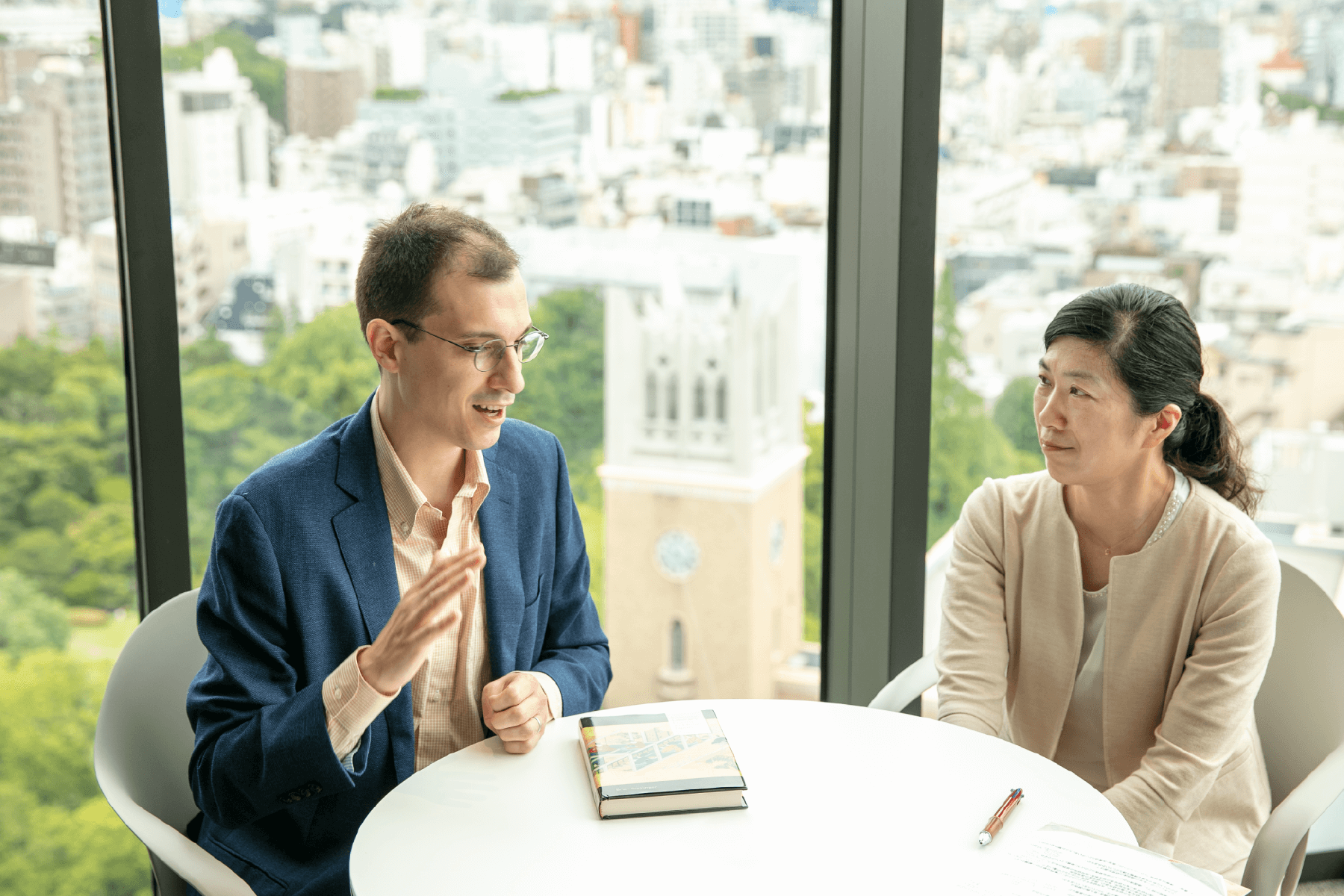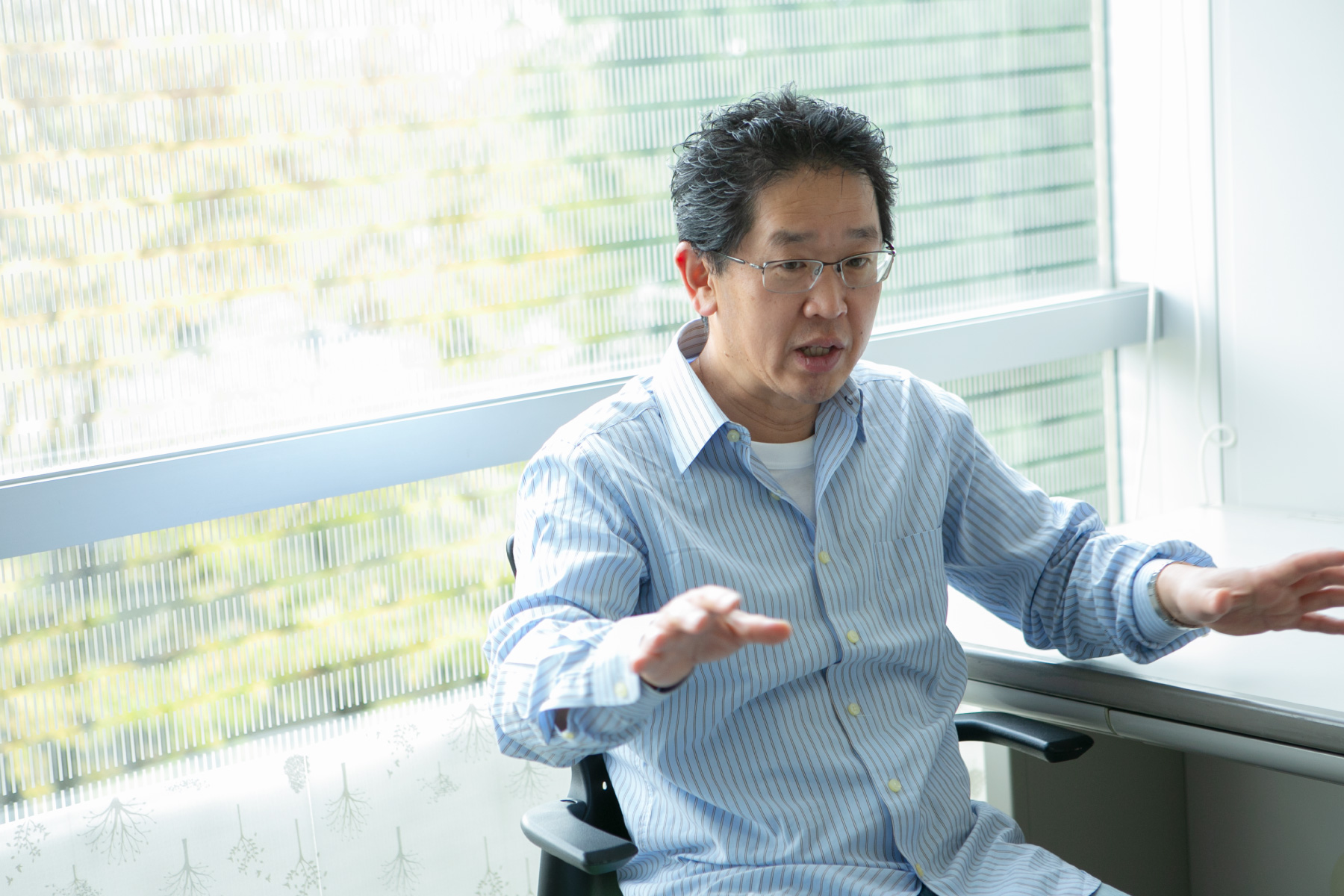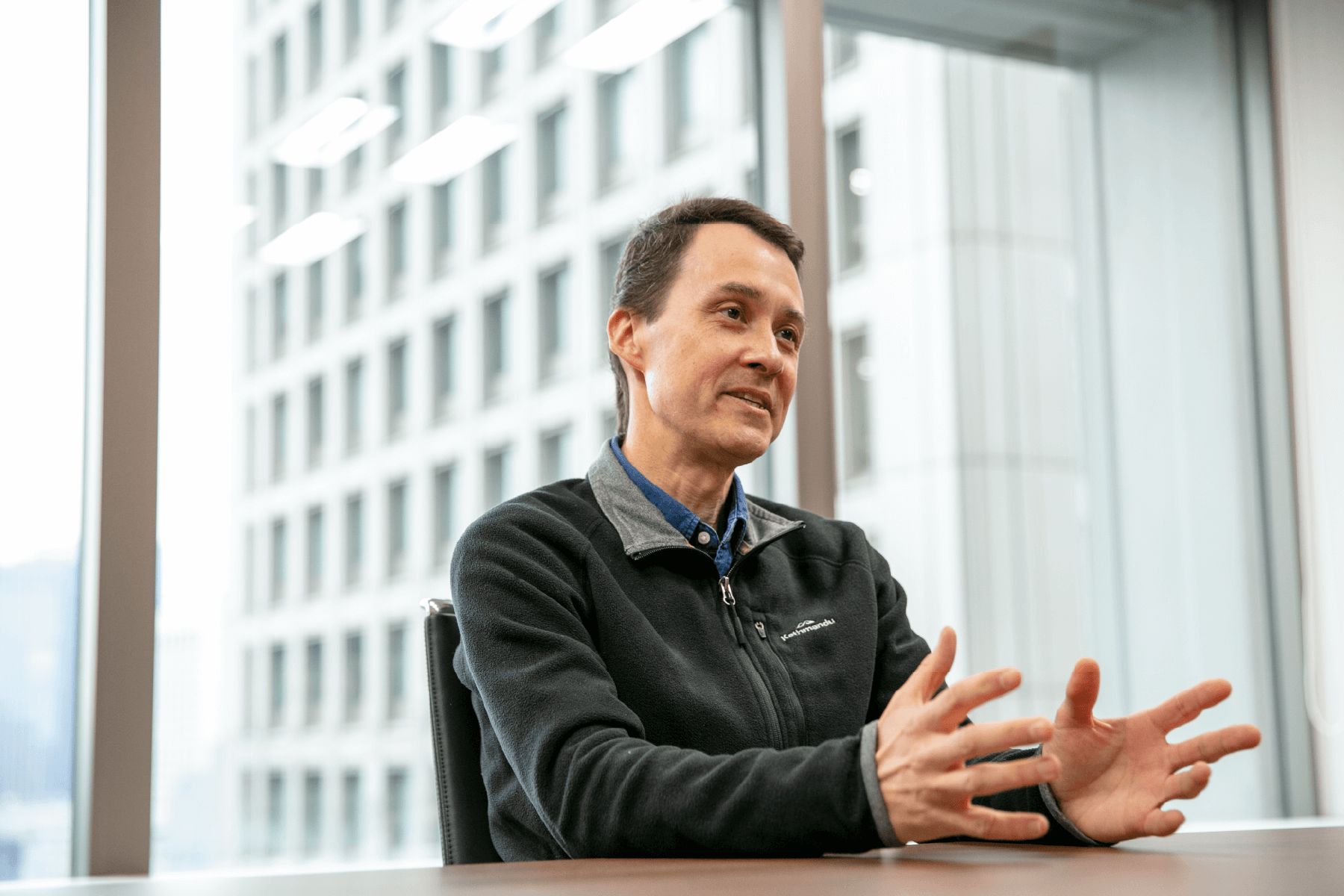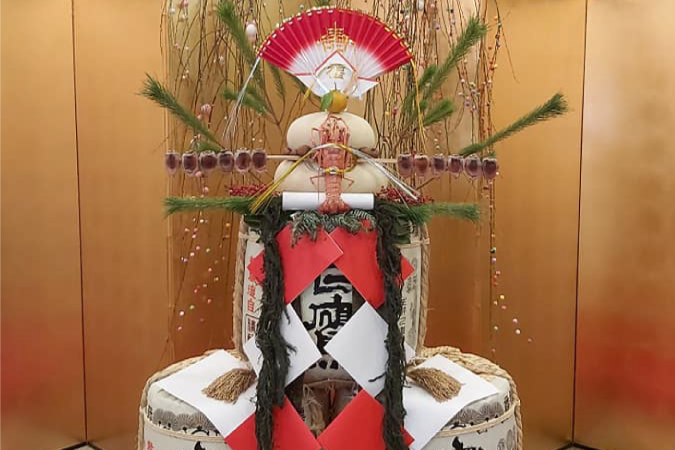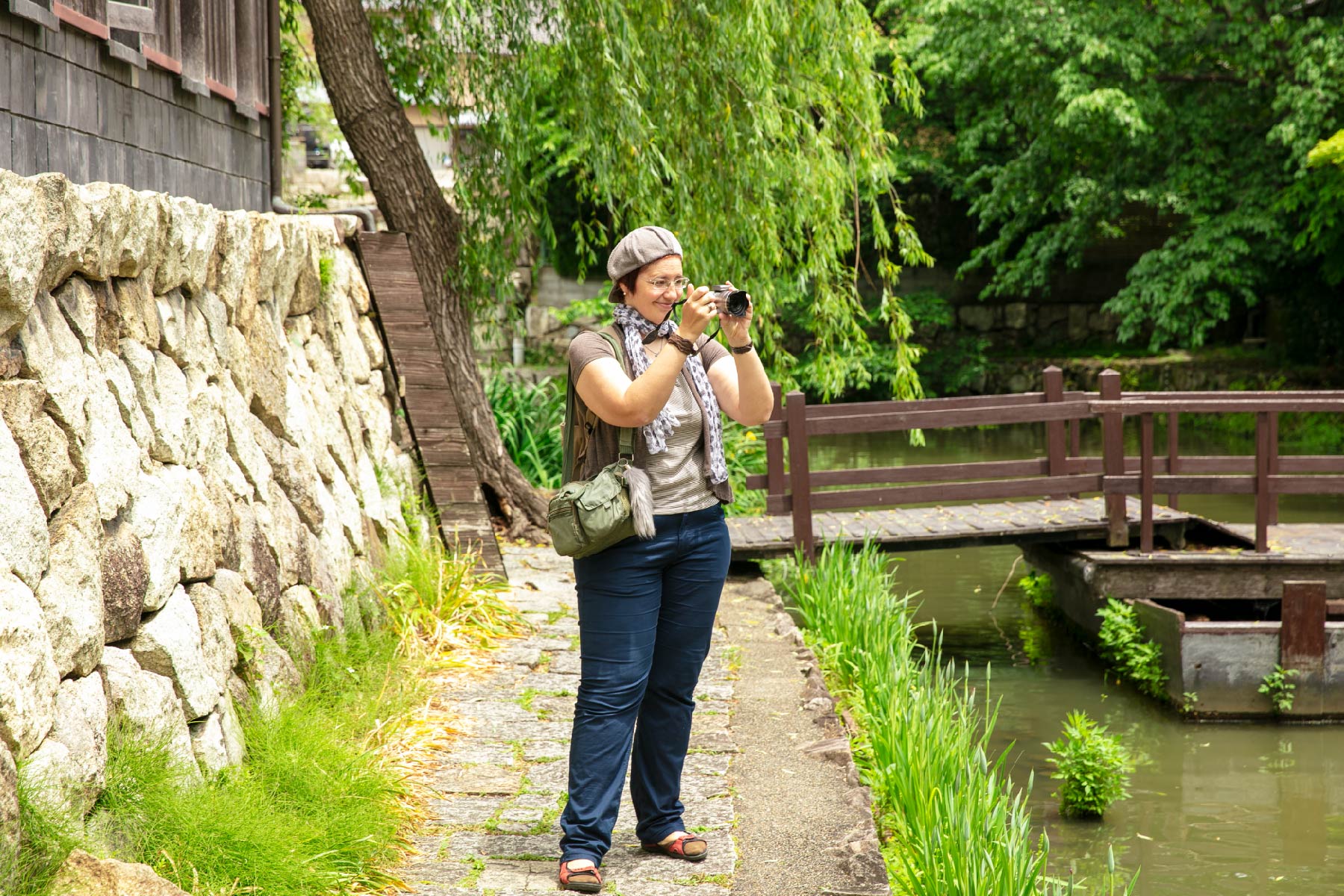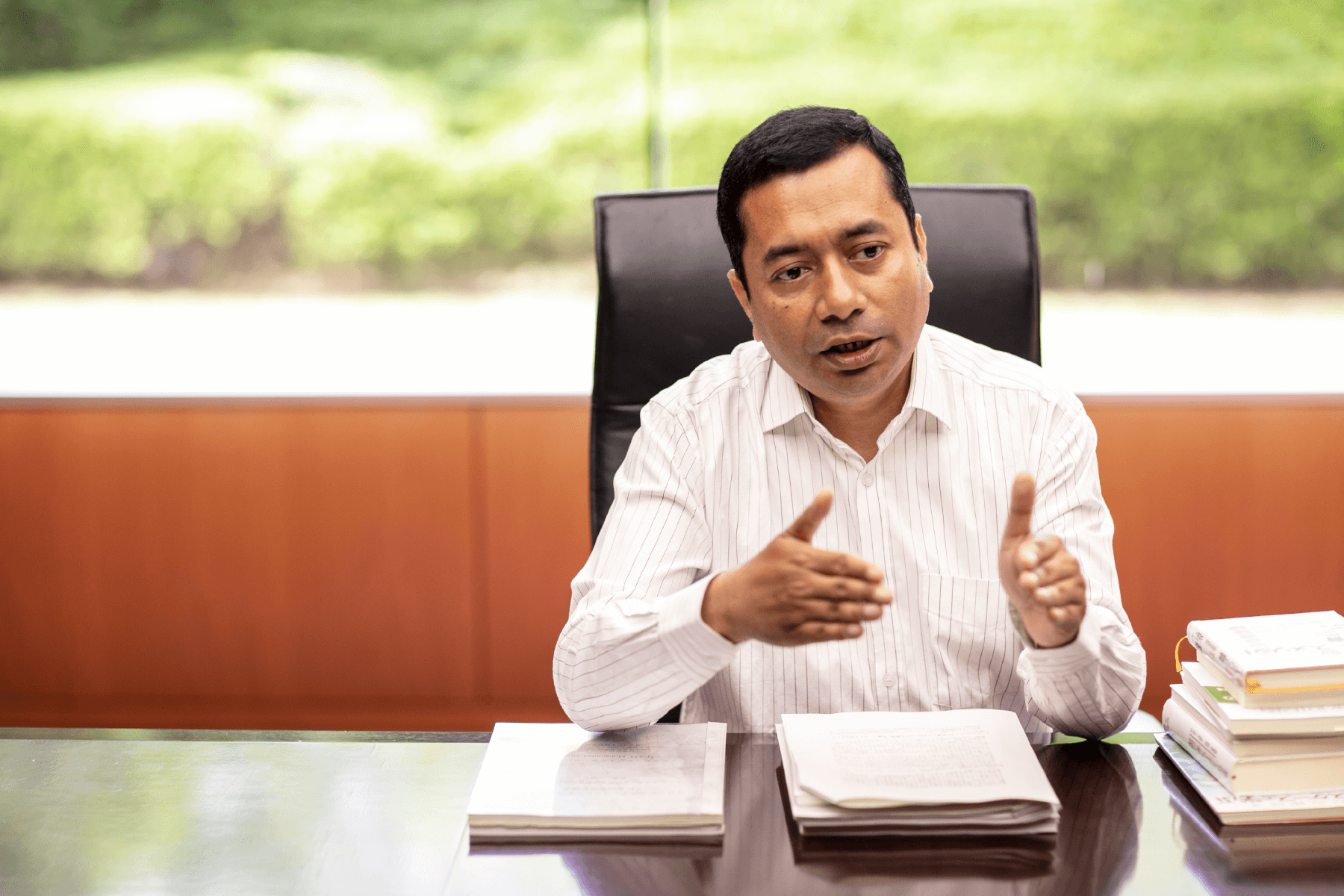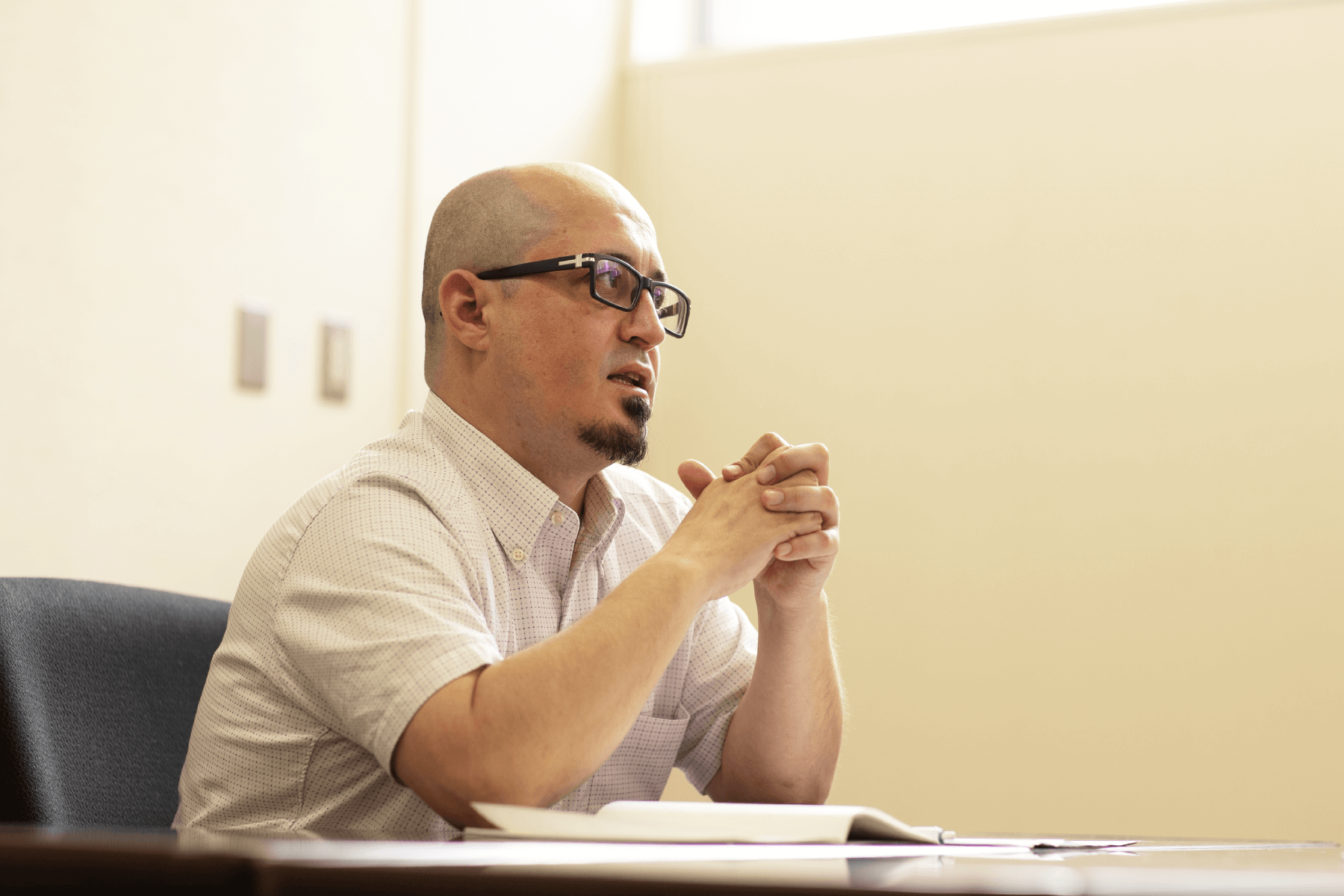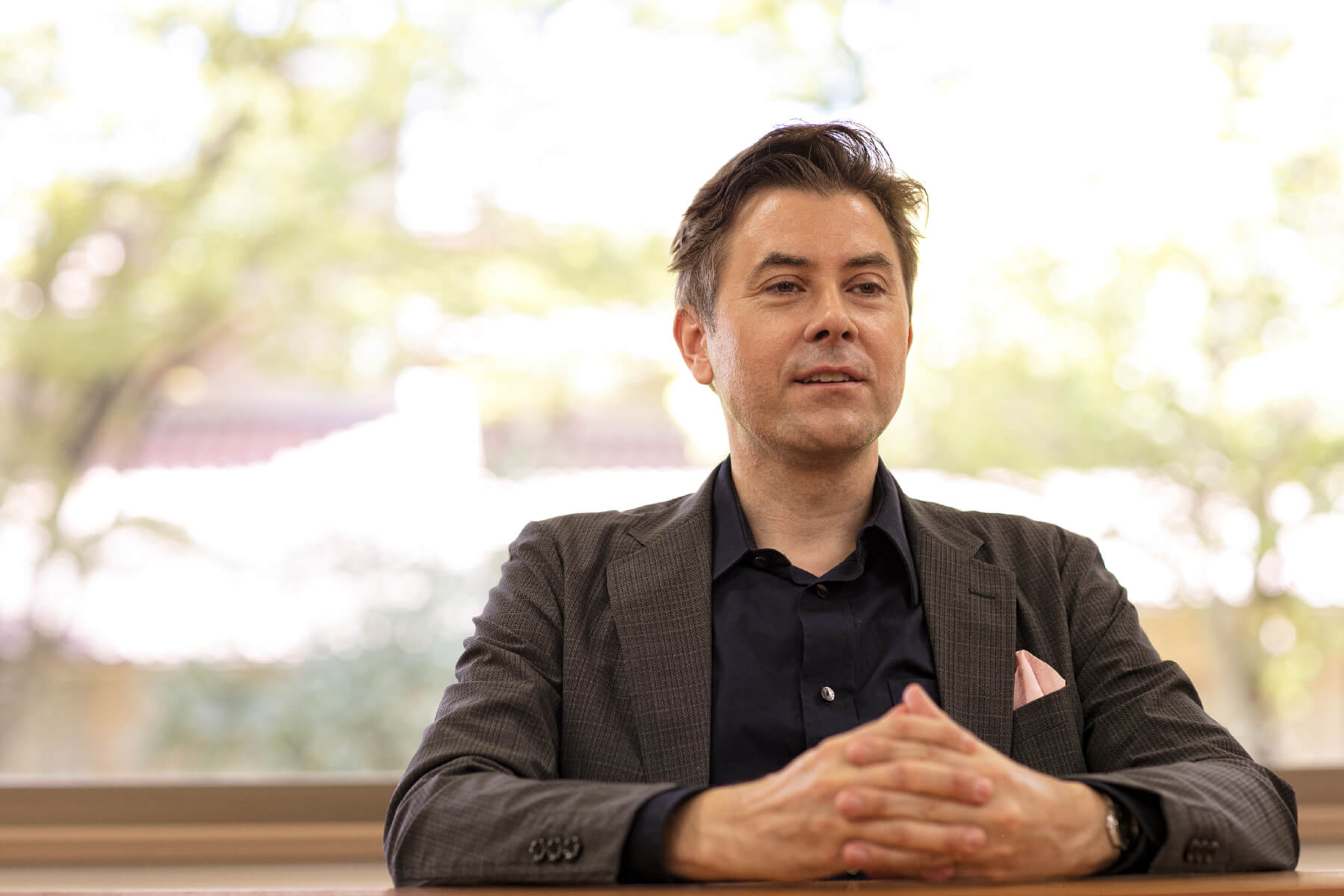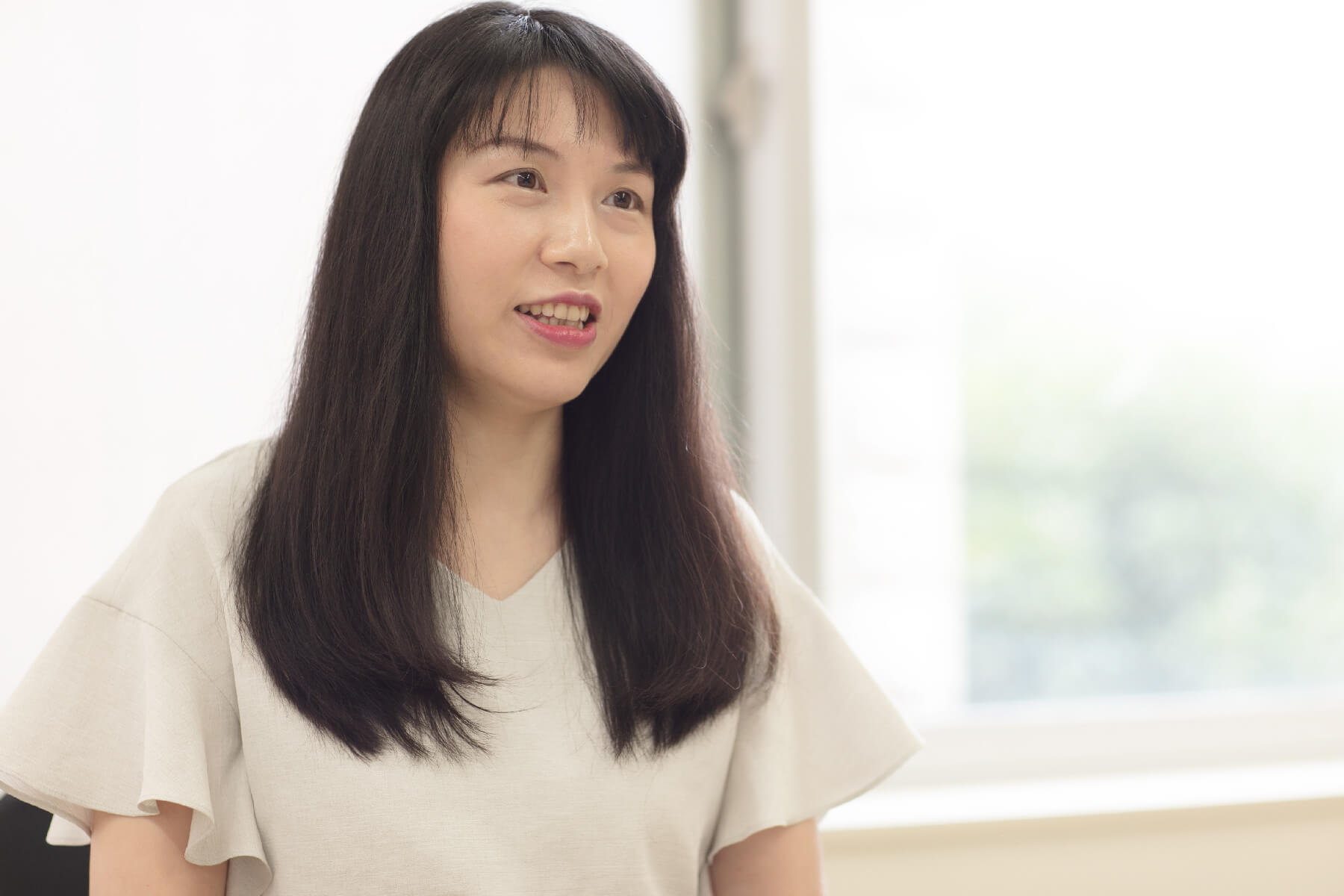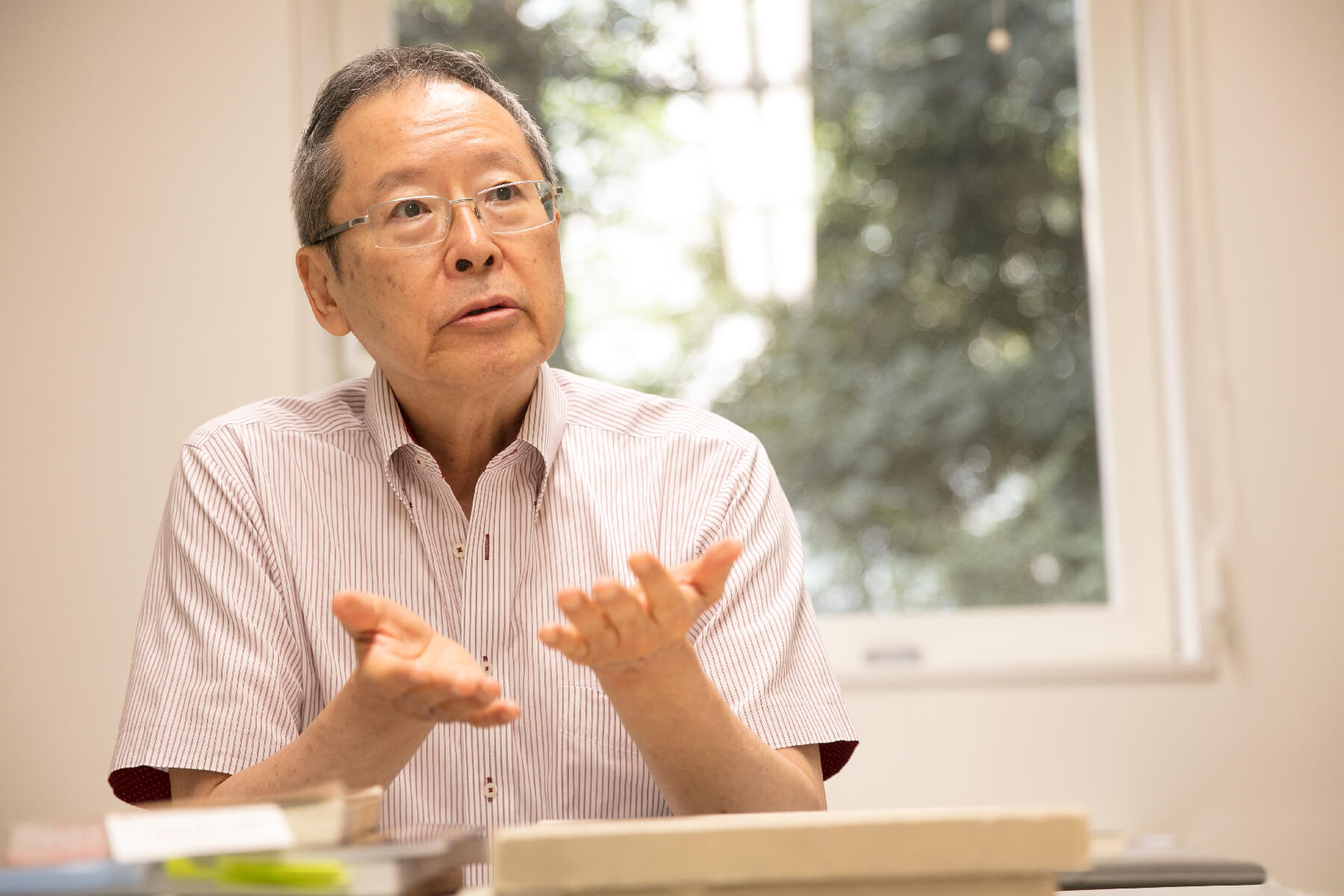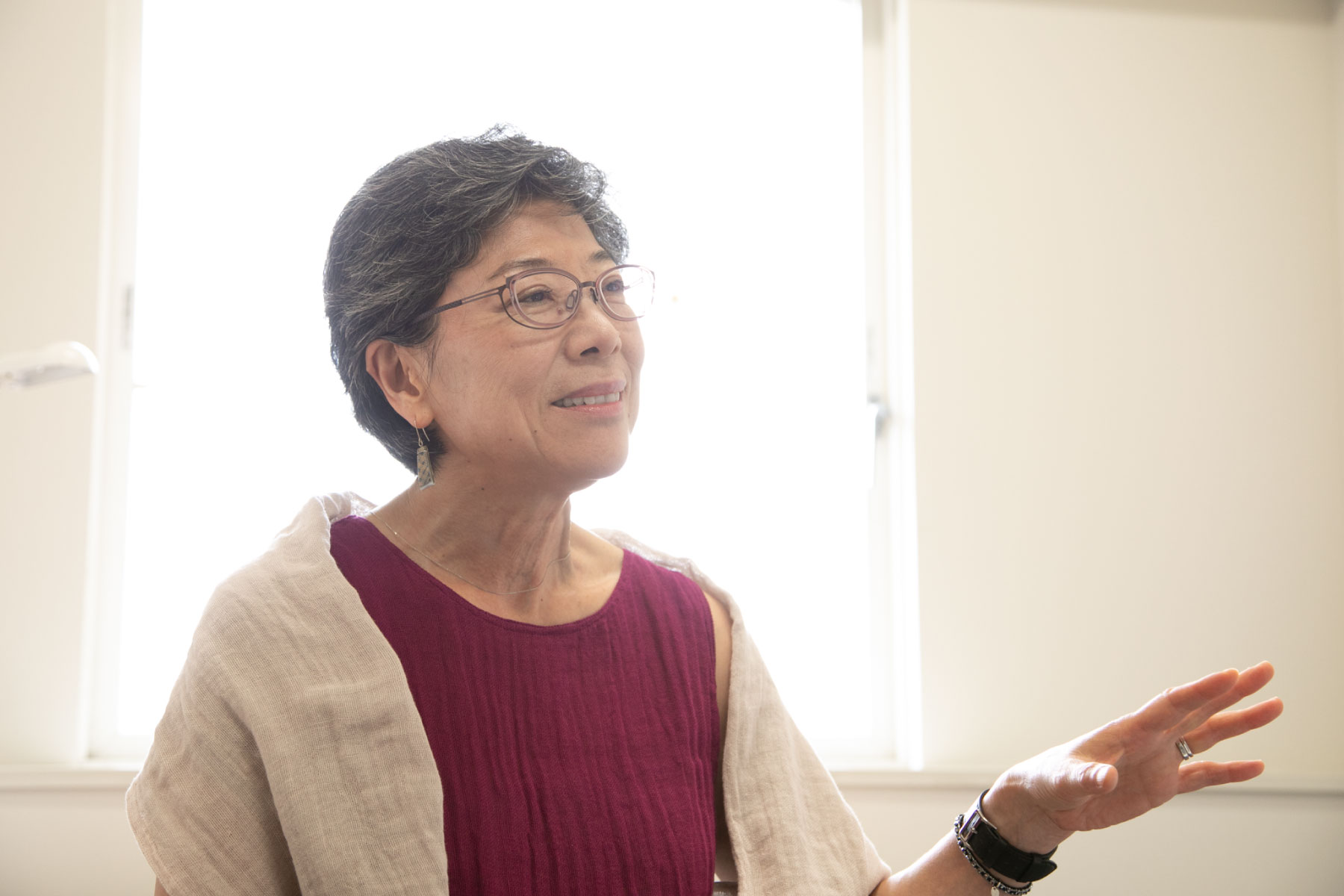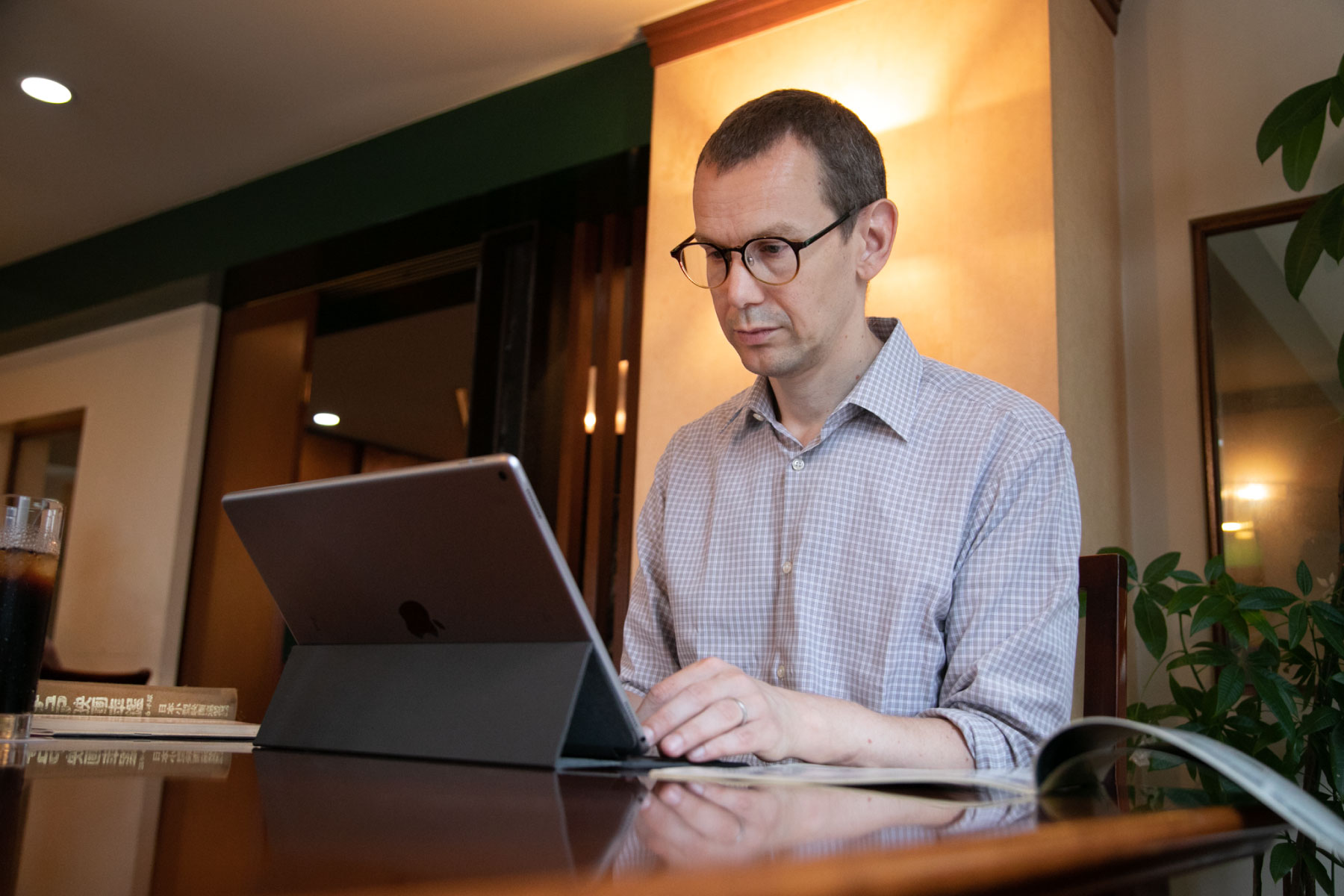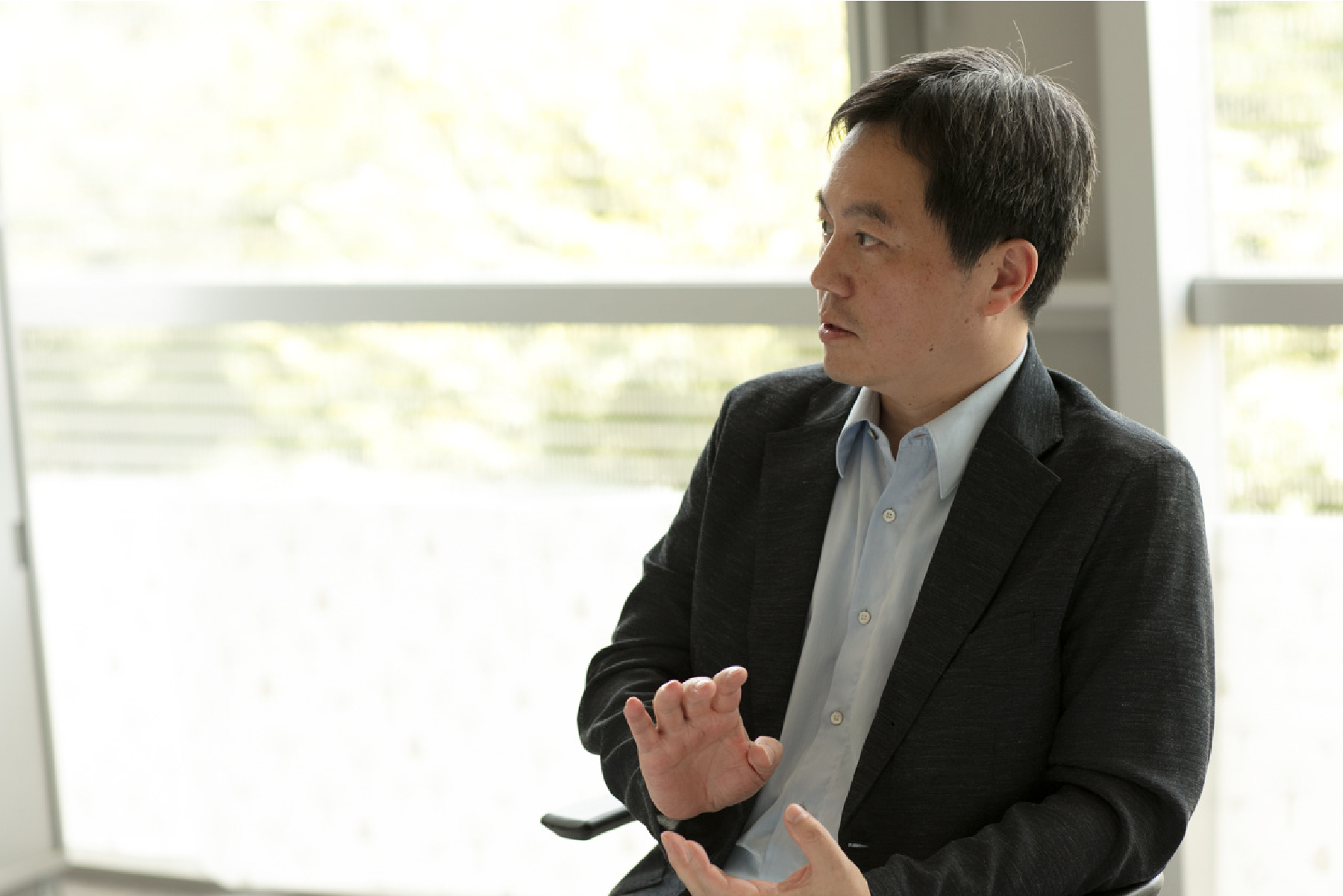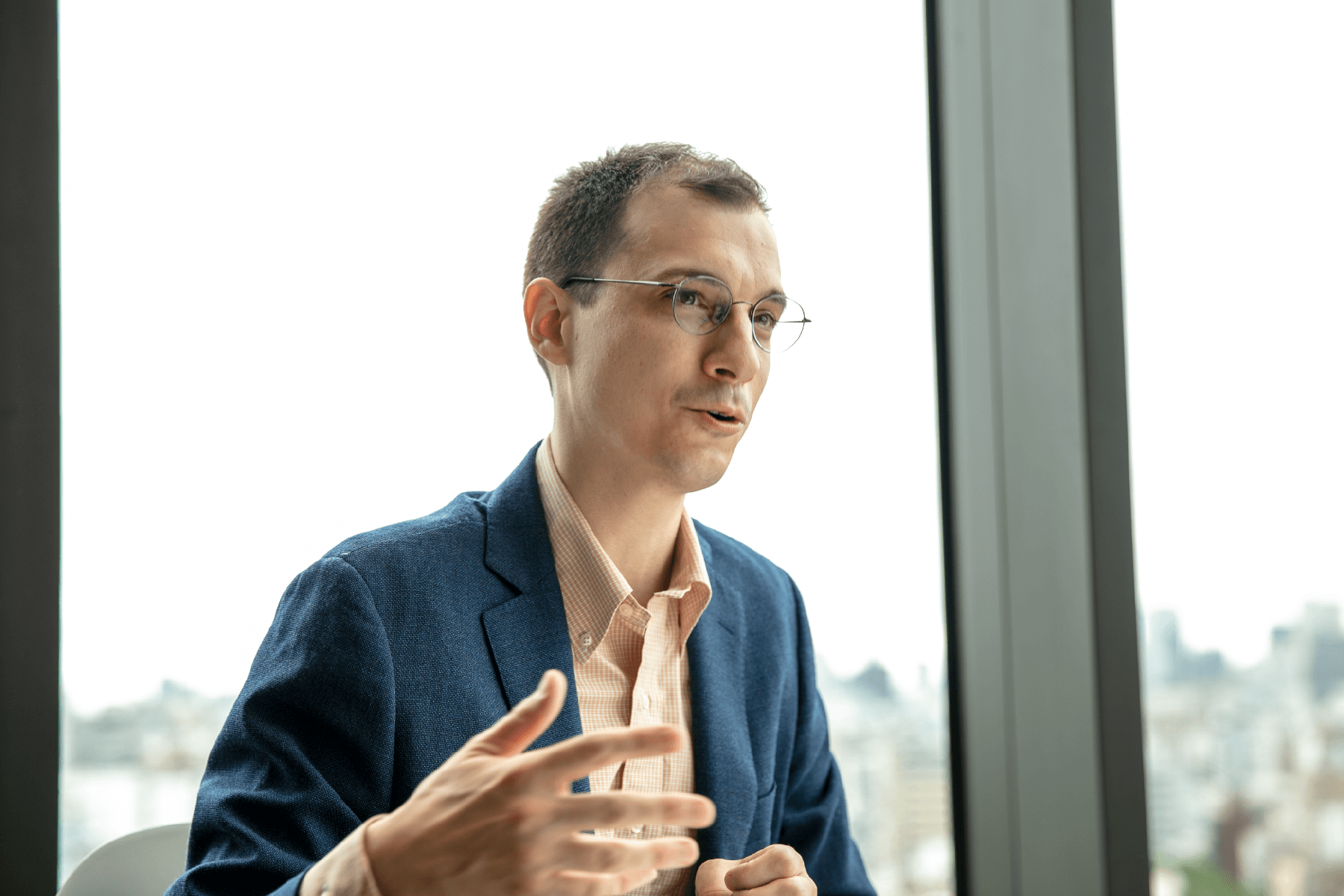
The Middle Ages, when there was a mixture between the manuscript culture of the imperial court and woodblock prints made by Zen Buddhist monks
Could you start by telling us about your work Dr. Steininger.
Dr. Steininger: I was originally researching “Japanese Sinology,” an area of academia and literature related to inherited Chinese traditions in pre-modern Japan. Two years ago, I published a study summarizing how Chinese literature was used among officials in the 10th and 11th century, which would be the Middle Heian period of Japanese history. It was a study of the place of Chinese literature in society at that time.
When I began my research, there were very few materials left from the Heian period, so when undertaking research, I had to mainly use texts that were copied during the Kamakura period (AD 1185 – 1333) and the Muromachi period (AD 1136 – 1573). While looking over these manuscripts, I grew more and more interested in when those manuscripts were made and why they still exist.
Thus, I am currently researching materials as “objects,” including manuscripts and woodblock prints from the 13th and 14th centuries that still remain in Japan. I have seen many manuscripts in my research so far, but I realized that there are things I cannot understand from manuscripts alone, so I have to look at woodblock prints as well. During this fellowship, I am researching 14th century woodblock prints made in Japan called the “Gozanban” (Five Mountains Prints).
Dr. Kono: The 13th and 14th centuries were also an interesting time for Sinology.
Dr. Steininger: China saw the rise of the Yuan Dynasty during this era, and trade between Japan and the Yuan Dynasty became very active from the end of the 13th century to the beginning of the 14th century. Because of this, many Zen Buddhist monks from Japan went to study in China, and those monks brought back books from China, especially woodblock print books. The activities of Zen Buddhist monks were not limited to religious affairs, and they gradually became the leaders of Sinology in all academic fields. In the 15th century, they completely took over that role, with Rinzai Buddhist monks making most of the Chinese poetry and diplomatic documents during the Muromachi period.
In the 13th and 14th centuries, the form of academia based on the culture of manuscripts, which had long focused on the imperial court, and the form of academia based on new ideas and the shape of books handled by Zen Buddhist monks started to blend together. This time was an incredibly important turning point.
Please tell us about your encounter and exchanges with Dr. Kono.
Dr. Steininger: Dr. Kono is a leading expert on Japanese Sinology, who has researched the Middle Ages, as well as a much wider range of periods, from ancient times to modern times. Our first meeting was just a coincidence, but a very precious and unlikely encounter.
Dr. Kono: In 2007, there was a very small reading attended by 3 or 4 researchers of Chinese poetry and prose and Sinology in Japan, and that is when we first met.
Dr. Steininger: I was affiliated with the University of Tokyo at that time, and I was invited by Dr. Michio Sato of Keio University to attend the reading. In addition to Dr. Kono and Dr. Sato, there was another representative figure of Chinese prose written by Japanese people; Dr. Akio Goto, who had retired from Osaka University and gone to work at Seijo University. I was just a graduate student who didn’t know anything, reading a book next to these scholars. I did not know who they were at that time, but if I did then I would not have had the courage to enter the room (laughs).
Dr. Kono: Dr. Sato held workshops on Sinology in North America, and that is where I first met him.
Dr. Steininger: Three Japanese professors, including Dr. Sato, were holding intensive lecture workshops on Sinology for 3 weeks at Columbia University. That is where I met Dr. Sato, who invited me saying, “Come see me when you come to Japan.”
Dr. Kono: Next, in 2013, a large academic conference known as AAS (Association for Asian Studies) was held in San Diego. When I participated in a panel with the theme of, “The Heian Period and Narratives and Literary Knowledge in Medieval Japan,” I asked Dr. Steininger to join in the discussion. After that, he came to Japan for one year to compose the book he mentioned earlier, and he attended my classes.
Dr. Steininger: It was a seminar about medieval Japanese Sinology, and its academic form.
Dr. Kono: There were lecture notes in which a 16th century scholar named Nobukata Kiyohara lectured on Chinese literature, and I read them. After that, when I gave a panel presentation at the American Japanese Literature Society (AJLS), I asked Dr. Steininger to participate in the discussion. In spring 2018, when I attended intensive lectures at UCLA in the United States, Dr. Steininger gave a lecture on Japanese Sinology at the same time. If you want to study Chinese poetry written by Japanese people and Japanese Sinology, there aren’t many people doing the same kind of research, so you run into the same people all the time (laughs).

Making connections with researchers in other fields and expanding research perspectives
Dr. Steininger, what activities have you been engaged in during your fellowship?
Dr. Steininger: I use the Waseda University library as a base, traveling to various other libraries, including the Oriental Library and the Seikido Library (Ishikawa Takeyoshi Memorial Library), which is famous for its collection of Gozanban prints, where I investigate materials. I make slow and steady efforts in my research, starting with making a reservation at a library so they can locate a book for me. Then I look at the publisher’s imprint showing when it was published, measure the dimensions, check for anything written in it after it was printed, take notes on remaining information, and look at the complementary relationship between the manuscript and woodblock print little by little.
Dr. Kono: It is a wonderful part of the job, isn’t it? Dr. Steininger also participates in research workshops once per week at our university. There is a book titled “Hundred and Twenty Songs” written by a 7th century Tang Dynasty Chinese poet named Li Jiao, which people in Heian period Japan used as a textbook when writing Chinese poems or learning about China. I read this book with students, but that book is on a subject that Dr. Steininger has already studied in detail.
Dr. Steininger: I have also compared manuscripts that remain in Japan and written down information, such as the differences and similarities in the text of different manuscripts, and then made a report on this in another study, as basic material for researchers.
Dr. Kono: I am truly grateful to have him at my research workshops. He cleverly points out the little details in each character and phrase that no one else notices, which surprises my students and proves to be a very stimulating experience.
Also, in May of this year, Dr. Steininger gave a lecture with the theme, “Norms and Exceptions in the Chinese Poetry of Japan: Taking a Second Look at the Discovery of ‘Heian Nationalism’ in the Middle Heian Period.” Dr. Steininger received a manuscript request from a historical researcher conducting research on “Heian nationalism,” and spoke about topics related to thoughts he had regarding this subject.
Dr. Steininger: Heian nationalism has a become a hot topic in the field of history in recent years. Until the Nara period, court rituals, literature and laws were based on the norms of China and the Tang Dynasty. Yet, much has been discussed after rethinking superficial events starting in the middle of the Heian period, when practices changed drastically and a unique Japanese way of doing things came to be in many different fields. Among these discussions, kana literature, tanka poetry, and stories popular in the Middle Heian period are particularly symbolic of change. When historians use ancient Japanese literature for their discussions and scholars of Japanese literature such as ourselves start speaking from the perspective of Japanese literature, it makes for a very stimulating discussion indeed.
Dr. Kono: Research spanning various fields, including literature, history, and theology, is now spreading little by little. I feel like the boundaries between fields are still high in Japan, but what about the United States?
Dr. Steininger: History research seems to be focused strictly on history in the United States, but theology research and literature research are very closely related. For example, investigating the authors and donors of my books is not only a matter of literature, it is also deeply tied to theology and sociology.
Dr. Kono: Many researchers of history, including Akio Kawajiri, a professor of Japanese history at Waseda University, as well as researchers in many fields from both Waseda and other universities attended this lecture on Heian nationalism. Through connections with Dr. Steininger, I experienced exchanges with researchers in different fields.
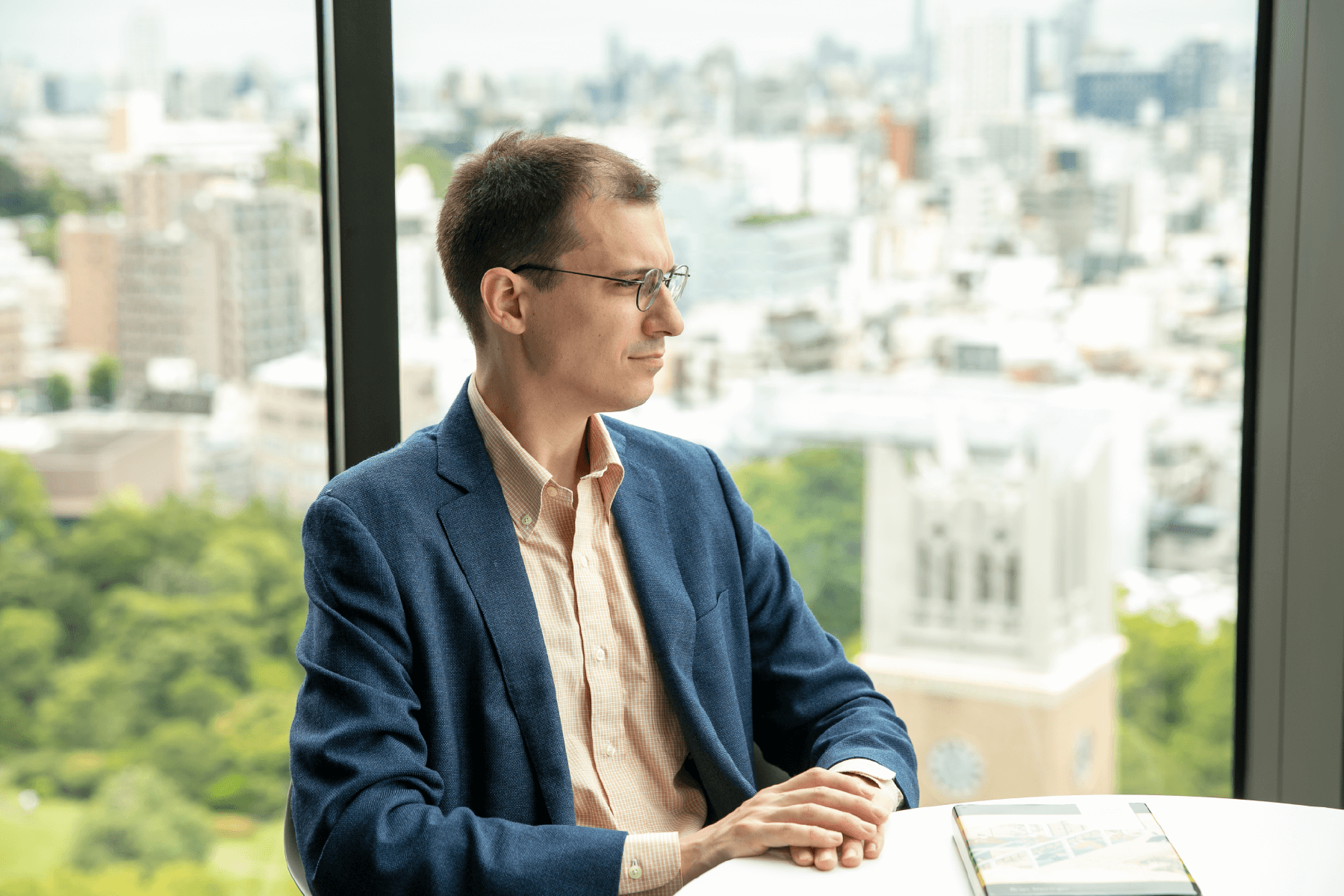
So, conducting joint research expands your connections with people and your research?
Dr. Steininger: I have also learned a lot from Dr. Kono through research workshops. There are many methods for conducting research on Chinese literature, but the university where I attended graduated school excels at studying the guiding marks for rendering Chinese into Japanese. Looking at old manuscripts, I really feel as though I am actually in “the field,” because I can look at an old manuscript and see how the Chinese literature would be read in Japanese, and see who wrote Chinese poems for what events. You could say that I emphasize the Japanese elements of Chinese prose written by Japanese people.
In contrast to this, Dr. Kono is strongly aware of the connection with mainland China, even in Chinese prose written by Japanese people. She seeks to learn how literature was understood and interpreted in Japan by researching how certain expressions used in Chinese literature written in Japan indicate which Chinese books were brought over to Japan. I think this is because Dr. Kono has a strong connection with researchers in East Asia, seeing as she frequently presents her research in China and Korea herself, so she sees Chinese literature as a body of literature for all East Asia.
Dr. Kono: What is the state of research on Chinese prose written by Japanese people over in America?
Dr. Steininger: There aren’t that many people studying Japanese literature in the United States, but in the past 10 years, the comparison of Japanese and Chinese literature, as well as Chinese prose written by Japanese people, has started to gain attention.
Dr. Kono: I suppose that is because it hasn’t been researched very much so far, but are there any other reasons?
Dr. Steininger: In terms of internal factors, reflection on the question of “What is Japanese literature?” has become a central issue in Japanese literature research since the 1990s. What we worship as classics were made in a relatively modern time during the Meiji era (AD 1868 – 1912), and many other works that they overshadowed have been forgotten. The greatest of these forgotten genres is Chinese prose written by Japanese people. I have gradually become more aware that I must reassess Chinese prose written by Japanese people, go beyond the era when modern and nationalistic thought was dominant, and rethink on the more diverse Japanese literature in the context of history.
In terms of external factors, China has a growing economic, political, and cultural presence. More and more people are studying the Chinese language in America.
Dr. Kono: In the case of Japan, since modern times Japanese literature or national literature have been written in Japanese, and Chinese prose was strongly considered to be Chinese. However, in places other than Japan, such as in the United States, faculties have names like “Faculty of East Asian Studies” or “Faculty of Asian Studies.” There it is easier for academics to not only research Japan, but also to see Japanese kanji in the context of the kanji cultural sphere. That is a strength possessed by researchers overseas.
Dr. Steininger: That may be true. Many of my colleagues are researching Korea or China. I gather with them regularly to present research to each other, but I cannot simply consider Japanese literature on its own, and must consider the connections in East Asia to communicate the findings of my research.
Dr. Kono: In Japan, since the Meiji era, national literature research was mainly focused on Japanese language literature, including stories and tanka poetry, but then some realized that the relationship between Japanese classics and Chinese words or Chinese prose deserved more emphasis, and in 1983 an academic society was established called the Wakan Comparative Literature Association. However, they mostly focus on Japan and China, so there is not much research on Korea, which cannot be ignored.
Dr. Steininger, what is your status in the American research environment, where you research Chinese prose written by Japanese people?
Dr. Steininger: For example, in the research I am doing now, I can see noticeable changes in content, form, and awareness of Chinese prose written by Japanese people in the Middle Ages, especially poetry written by Zen Buddhist monks and Chinese poetry written before that. What specifically caused those changes is a major theme in Japanese literature research. However, at the same time, when looking from the viewpoint of books as objects, the woodblock print books and manuscripts, this relates to not only Japanese literature but also the world history of books. While studying Japanese books, I have found many hints by reading the history of European and Chinese books, but now the big challenge for me is to compile my research so that researchers in other fields can gain something useful from it.
However, the study of national literature in Japanese is completely different, because there are thousands of researchers in the field. In this context, Chinese prose written by Japanese people was ignored by people in the field of conventional national literature both in Japan and China.
Dr. Kono: Chinese prose written by Japanese people is excluded from national literature along with the construction of modern nationalism, as was mentioned earlier, so there are not enough materials, including annotations, and some parts are different from orthodox Chinese prose, so it is very difficult to read. However, if you do not read this literature, you will not be able to understand how the contemporary world of the Japanese language and the world of academia and knowledge came to be. So, as I see it, our problem is that we must determine how the paradigm change occurred in the modern era, and how ideas and systems regarding academia and knowledge changed, so that we can explain the significance of what we are doing now.
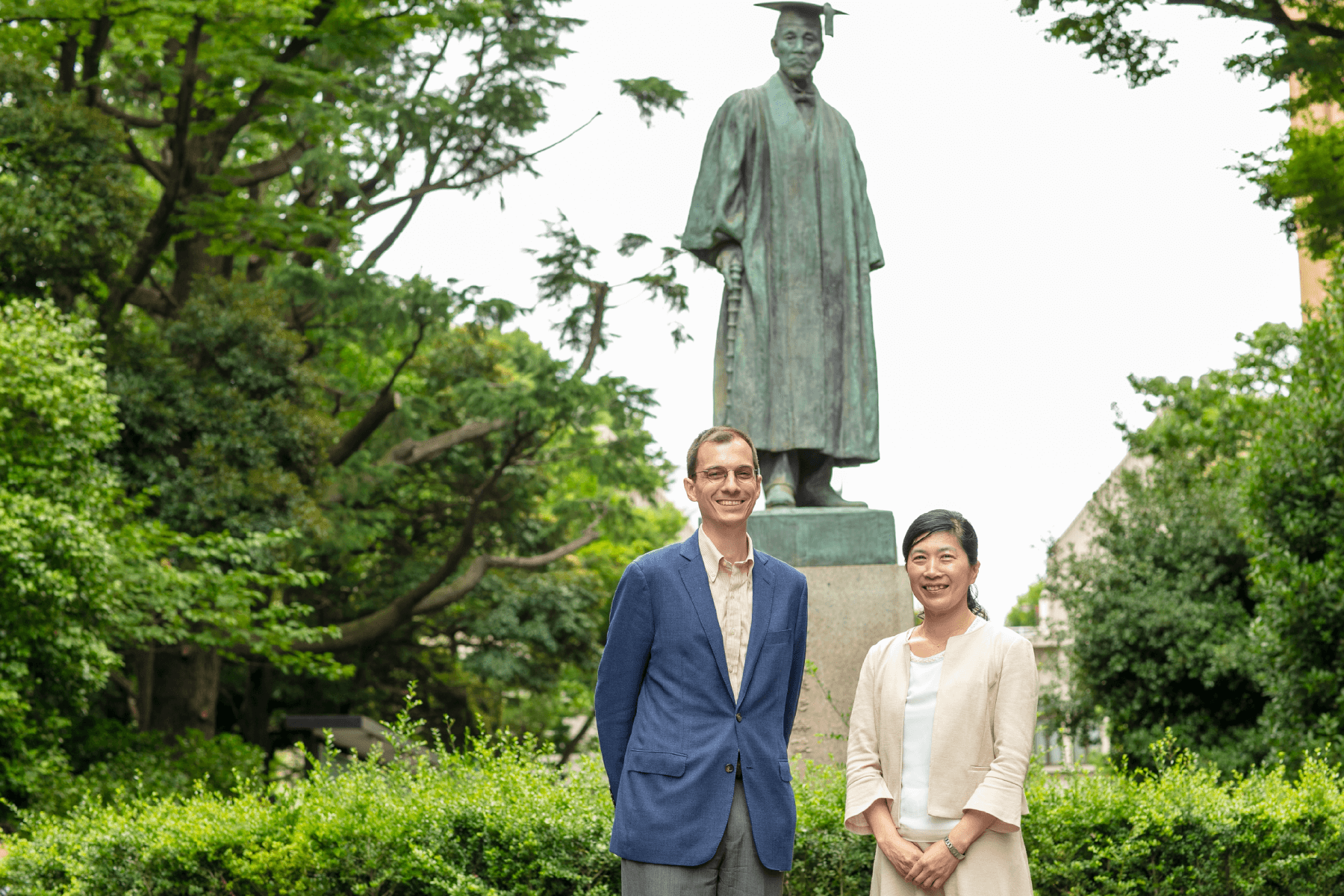
Active interaction with researchers from other countries is sure to help with later research.
Please tell us your future research prospects and your message to overseas researchers.
Dr. Steininger: I can only be in Japan for 6 months, so I am mainly focused on conducting steady research. However, I can only do this now because I am taking research leave, so I cannot normally undertake research like this. In America I have classes to teach, and do not have the materials on hand. Recently, many materials have been digitized including Japanese manuscripts and woodblock prints, but when looking at the book as a physical media, a digitized image does not present enough information. It is truly important to see the real materials. Currently, I am investigating these materials in Japan, but once I return to the United States, I plan to present my findings at research workshops and to my colleagues, receive their critique, and finally compile this as a book.
In addition, thanks to Dr. Kono, I have made various new connections and received requests to write or present, so I have great opportunities to send my research back to Japan. I feel that I was able to research this topic more deeply by sending back my research and receiving various opinions and critiques.
Dr. Kono: Now you can engage in discussions instantly using Skype, even when you are overseas, and movement of people has become much easier in comparison to a few decades ago. Do you have any advice for overseas researchers who come to Japan?
Dr. Steininger: Let me see. Basically, I would like to tell American scholars of Japan who are coming to Japan, whether they are graduate students or researchers, that they will have opportunities to see valuable primary sources while they are in Japan. However, they should not conduct their research alone, they should also make opportunities to get in touch with Japanese researchers. I first met Dr. Kono because I participated in a reading, and we have continued our exchange to this day. Please go and participate in research workshops, readings, and seminars, make presentations, and join in discussions.
Dr. Kono: Researchers in the current generations have excellent Japanese skills, and Dr. Steininger can even read Chinese prose (laughs). Thanks to this development they can engage in exchanges, but national literature researchers from Japan are typically not skilled at foreign languages, so there is very little outreach from the Japanese side to other countries. We must do something about this imbalance. I would really like Japanese graduate students to actively interact with foreign researchers.
Dr. Steininger: By contacting researchers from other countries, you can expand interpersonal connections, and learn various ways to conduct research. There are things you can’t learn just by shutting yourself in the library, so even if you don’t see a direct relationship to your research at first, it will all come back around later. I have felt this many times, including in my exchanges with Dr. Kono.
(Interview conducted in July 2019)



